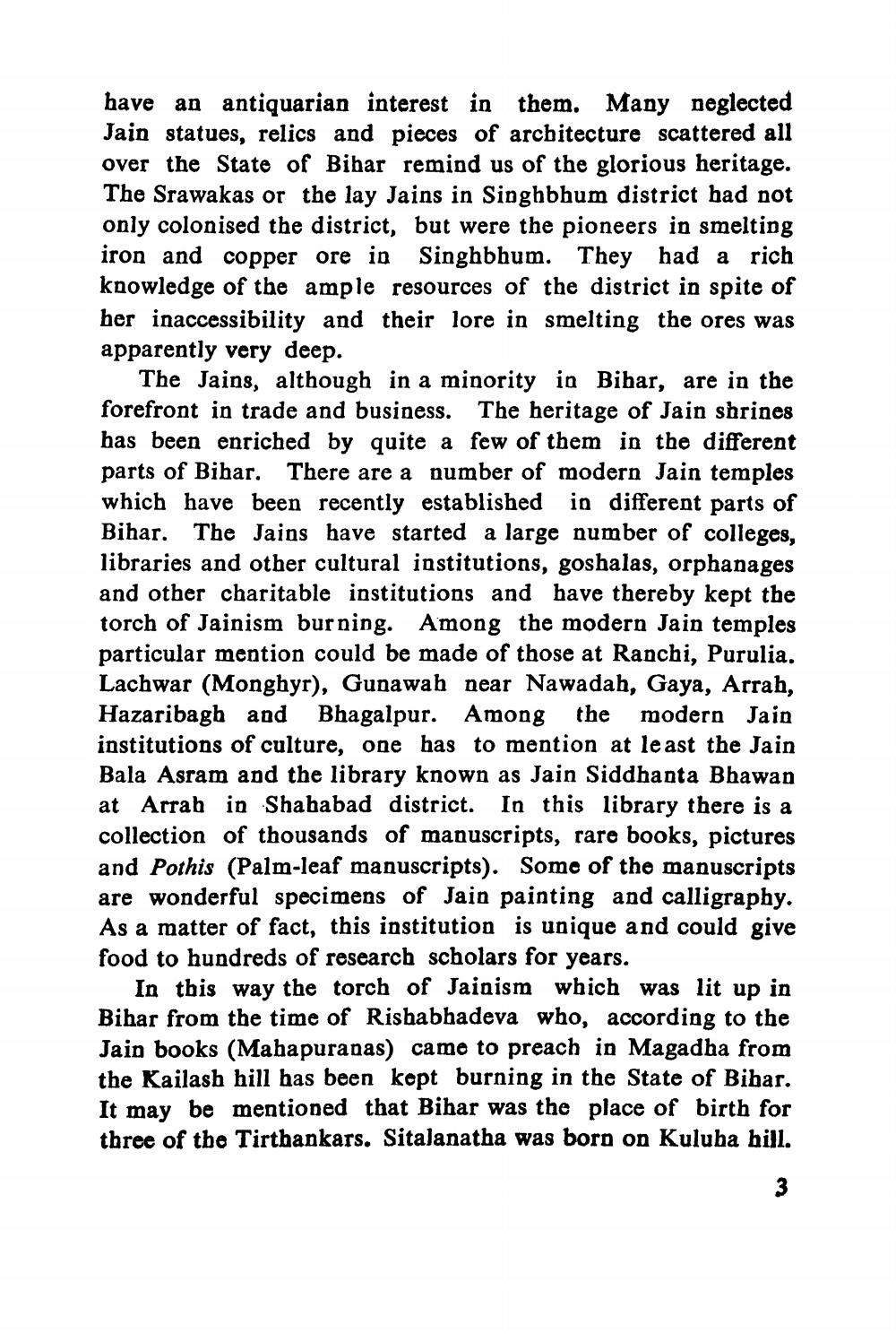________________
have an antiquarian interest in them. Many neglected Jain statues, relics and pieces of architecture scattered all over the State of Bihar remind us of the glorious heritage. The Srawakas or the lay Jains in Singhbhum district had not only colonised the district, but were the pioneers in smelting iron and copper ore in Singhbhum. They had a rich knowledge of the ample resources of the district in spite of her inaccessibility and their lore in smelting the ores was apparently very deep.
The Jains, although in a minority in Bihar, are in the forefront in trade and business. The heritage of Jain shrines has been enriched by quite a few of them in the different parts of Bihar. There are a number of modern Jain temples which have been recently established in different parts of Bihar. The Jains have started a large number of colleges, libraries and other cultural institutions, goshalas, orphanages and other charitable institutions and have thereby kept the torch of Jainism burning. Among the modern Jain temples particular mention could be made of those at Ranchi, Purulia. Lachwar (Monghyr), Gunawah near Nawadah, Gaya, Arrah, Hazaribagh and Bhagalpur. Among the modern Jain institutions of culture, one has to mention at least the Jain Bala Asram and the library known as Jain Siddhanta Bhawan at Arrah in Shahabad district. In this library there is a collection of thousands of manuscripts, rare books, pictures and Pothis (Palm-leaf manuscripts). Some of the manuscripts are wonderful specimens of Jain painting and calligraphy. As a matter of fact, this institution is unique and could give food to hundreds of research scholars for years.
In this way the torch of Jainism which was lit up in Bihar from the time of Rishabhadeva who, according to the Jain books (Mahapuranas) came to preach in Magadha from the Kailash hill has been kept burning in the State of Bihar. It may be mentioned that Bihar was the place of birth for three of the Tirthankars. Sitalanatha was born on Kuluba hill.




